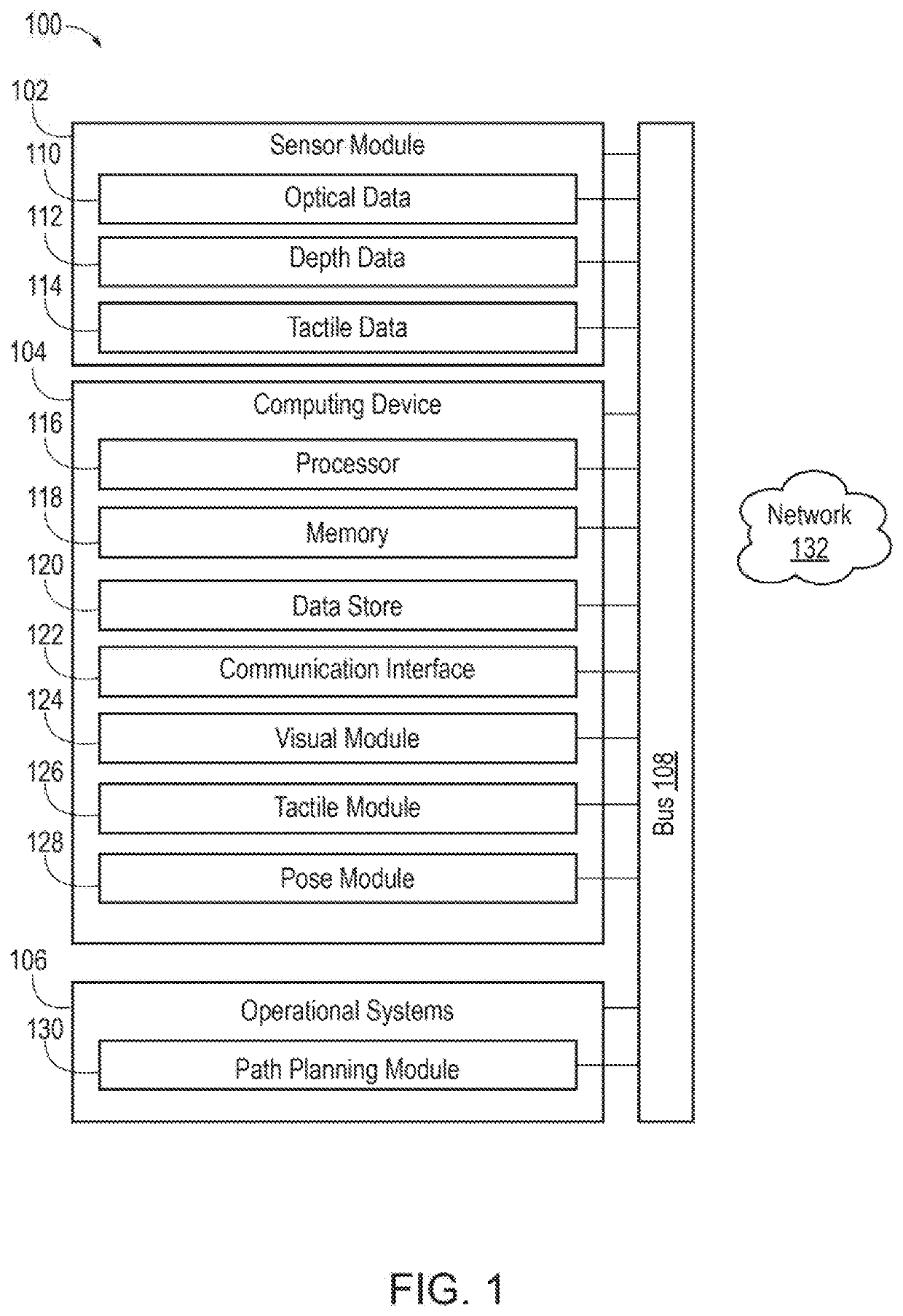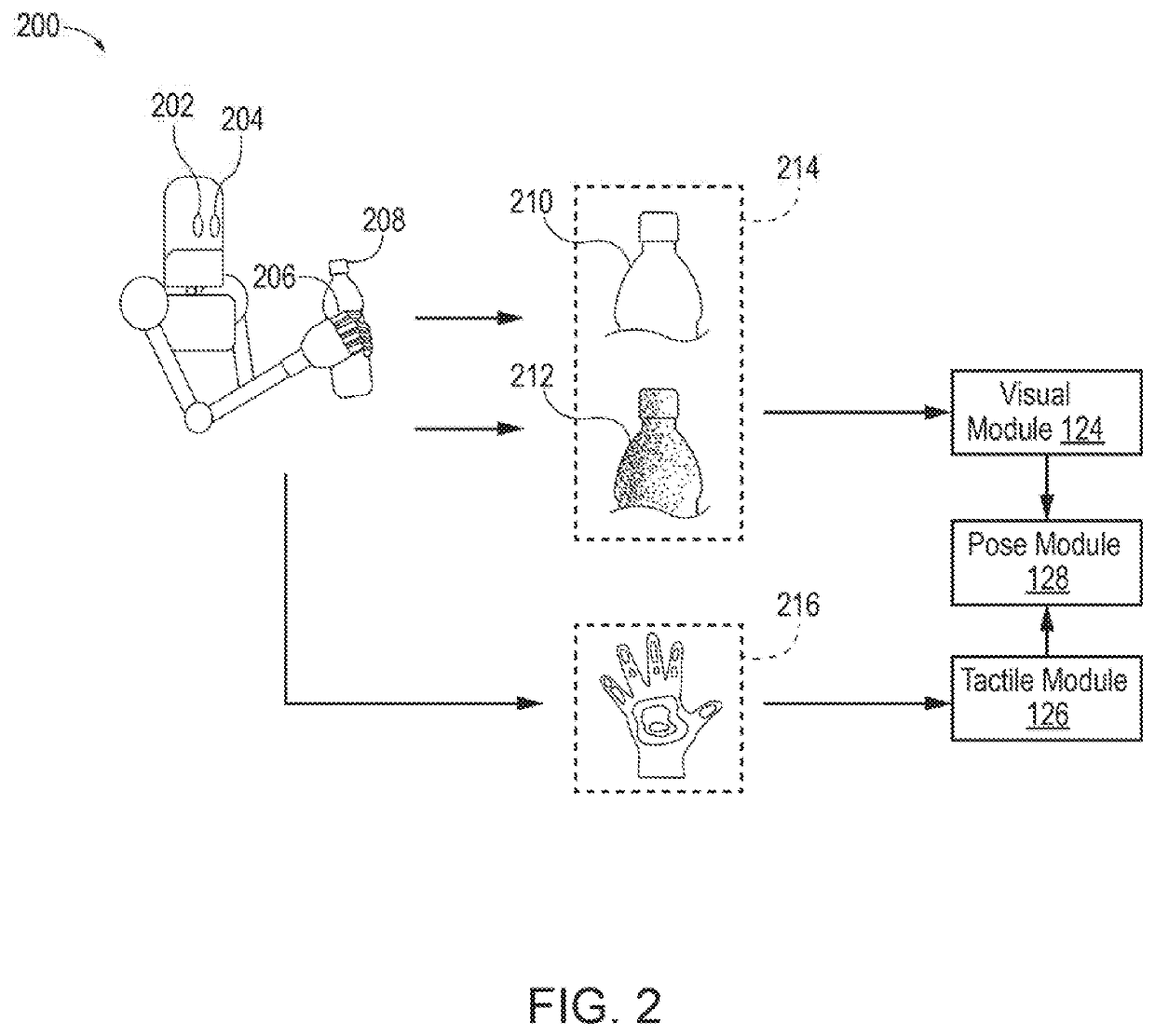Systems and methods for visuo-tactile object pose estimation
a technology of visuo-tactile objects and systems, applied in image analysis, programme-controlled manipulators, programme control, etc., can solve problems such as poor success ra
- Summary
- Abstract
- Description
- Claims
- Application Information
AI Technical Summary
Benefits of technology
Problems solved by technology
Method used
Image
Examples
Embodiment Construction
[0010]Systems and methods for visio-tactile object pose estimation. Existing pose estimation is divided to three main categories: geometry matching, probabilistic methods, and machine learning methods. Geometric methods use tactile-geometric-shape coherence descriptors to estimate the pose of the object. These techniques are fast to implement, however, they suffer from slow run-time performance. Probabilistic methods use computational algorithms, such as particle filters, Simultaneous Localization and Mapping (SLAM), and Monte Carlo methods, to estimate object poses. The probabilistic methods require excessive contacts with the object and also suffer from slow run-time performance. Machine learning methods have fast run-time performance but are reliant on visual information and do not use tactile information. Furthermore, the machine learning methods are directed to determining the shape of an object. Shape is an inherent characteristic of the object regardless of the environment.
[0...
PUM
 Login to View More
Login to View More Abstract
Description
Claims
Application Information
 Login to View More
Login to View More - R&D
- Intellectual Property
- Life Sciences
- Materials
- Tech Scout
- Unparalleled Data Quality
- Higher Quality Content
- 60% Fewer Hallucinations
Browse by: Latest US Patents, China's latest patents, Technical Efficacy Thesaurus, Application Domain, Technology Topic, Popular Technical Reports.
© 2025 PatSnap. All rights reserved.Legal|Privacy policy|Modern Slavery Act Transparency Statement|Sitemap|About US| Contact US: help@patsnap.com



